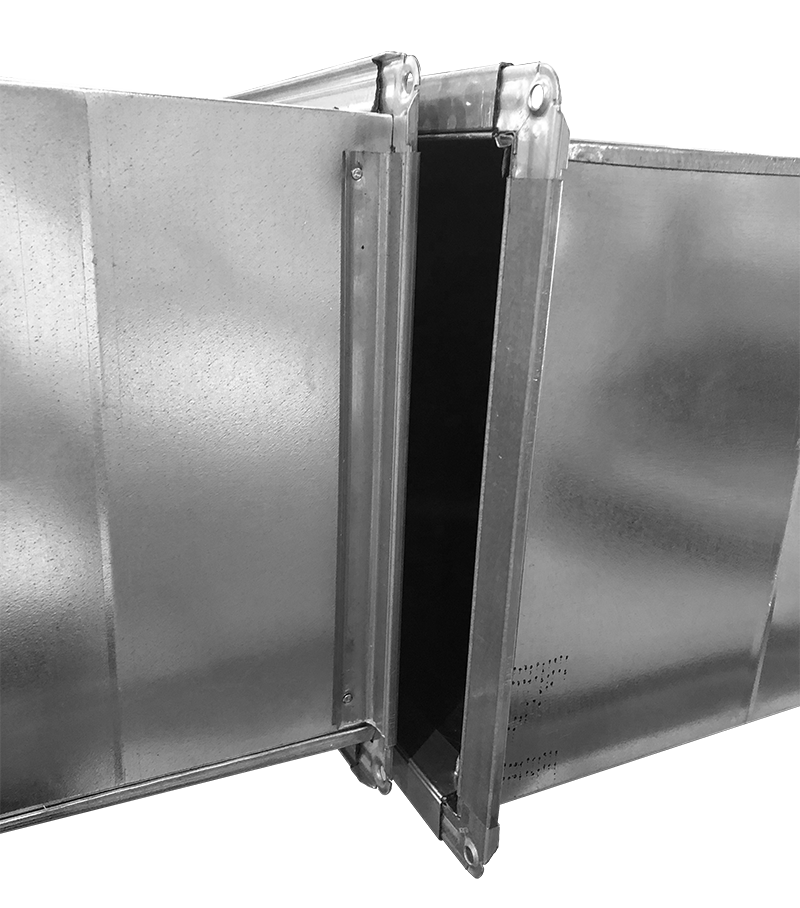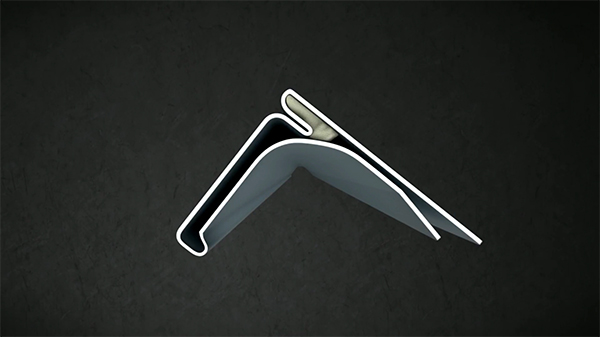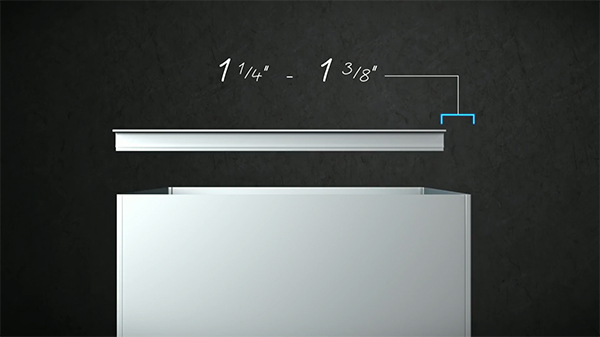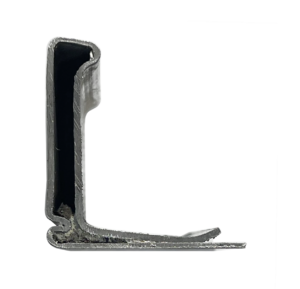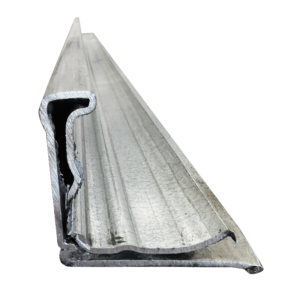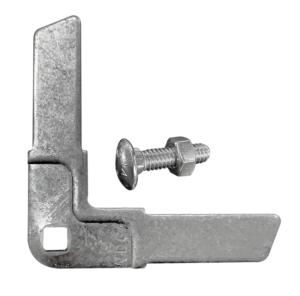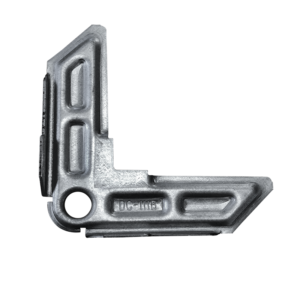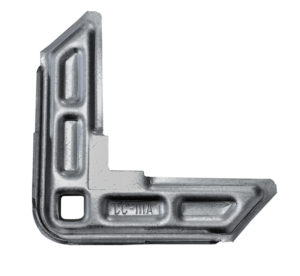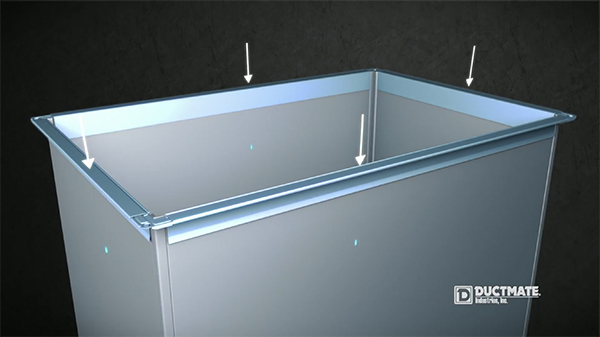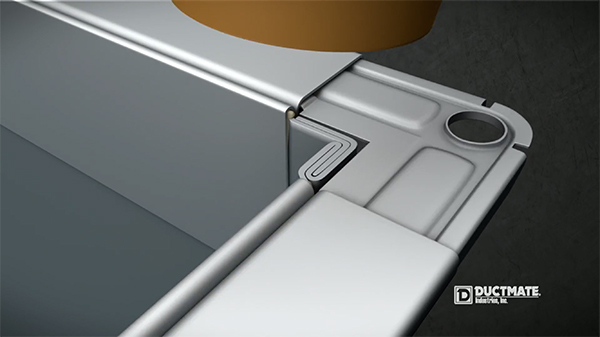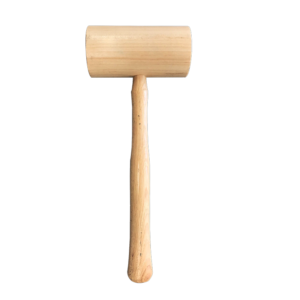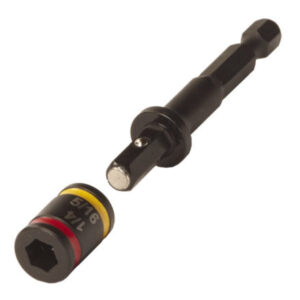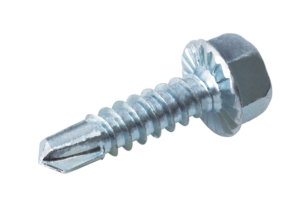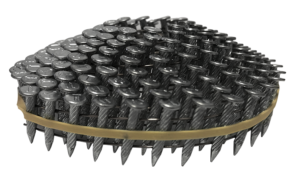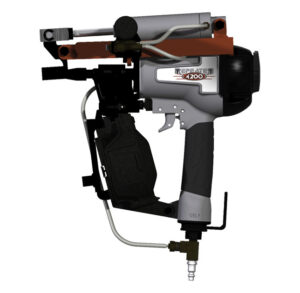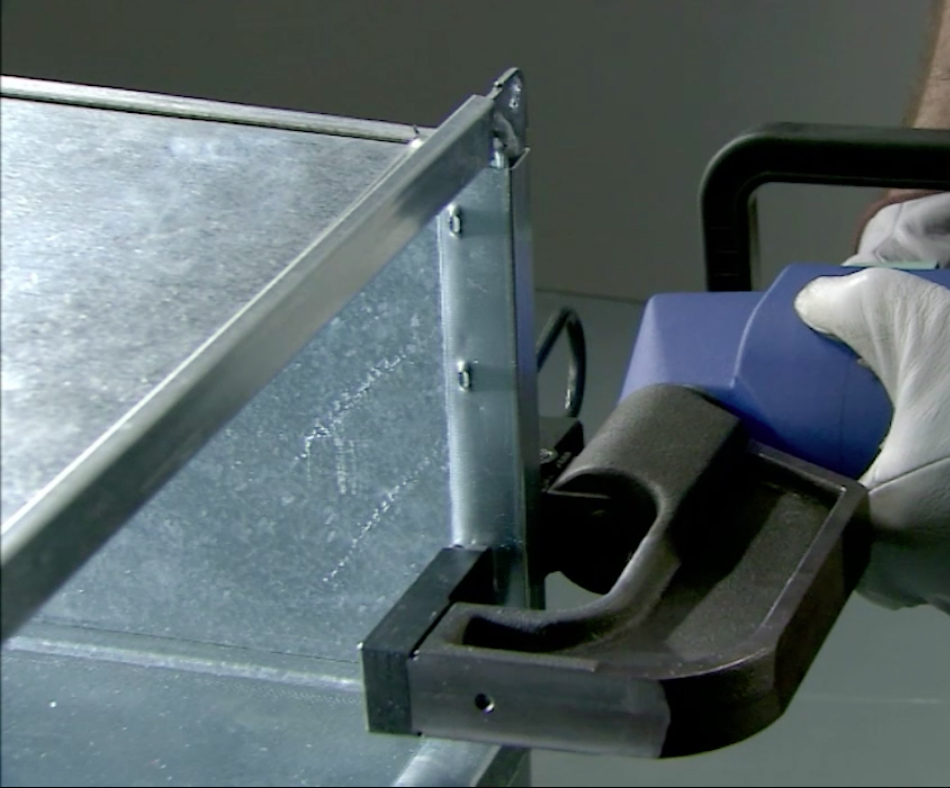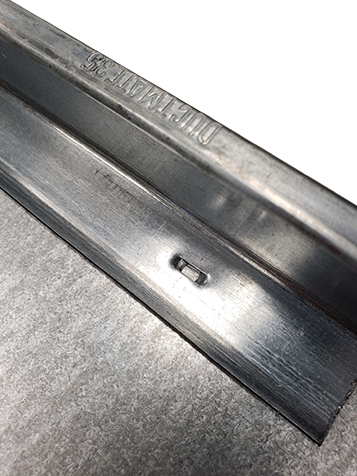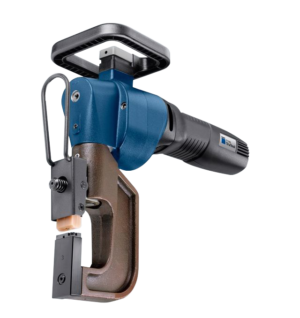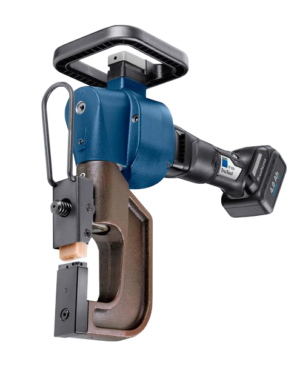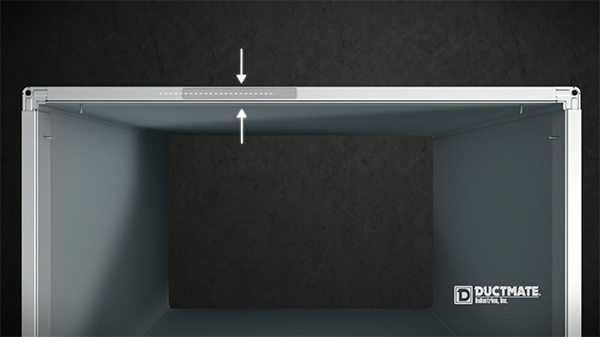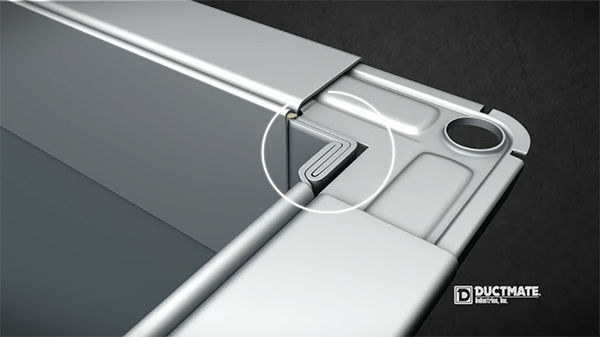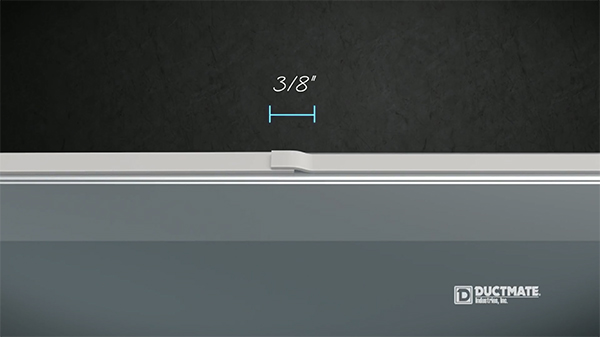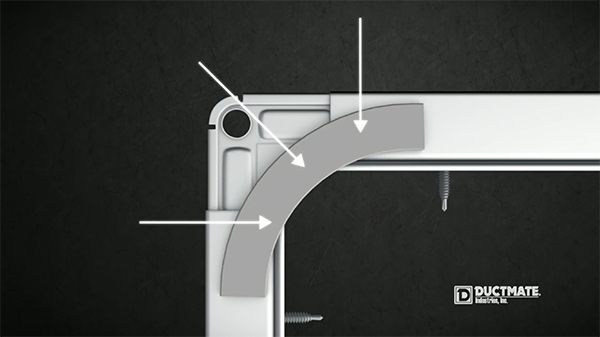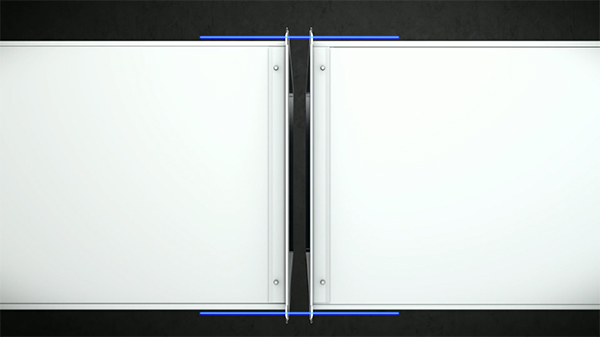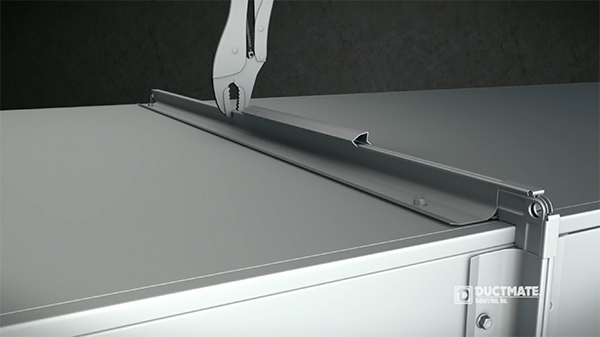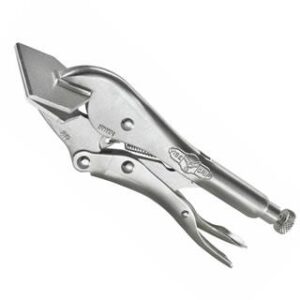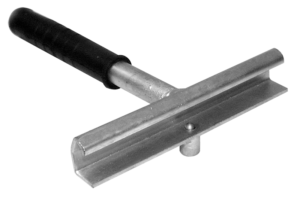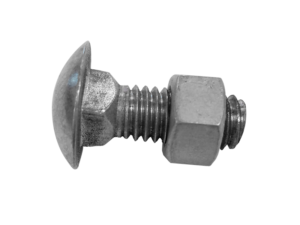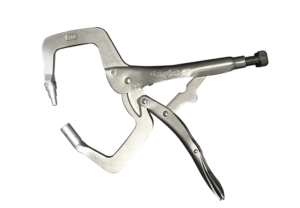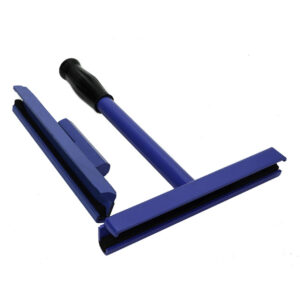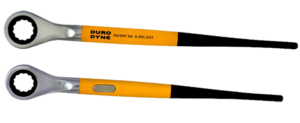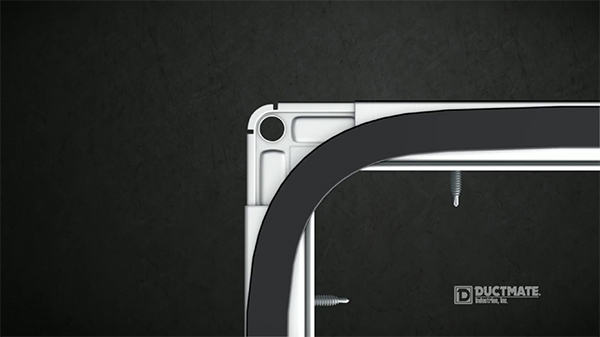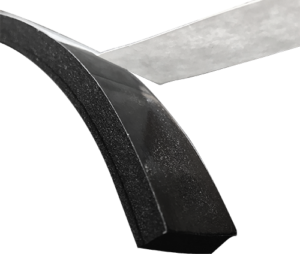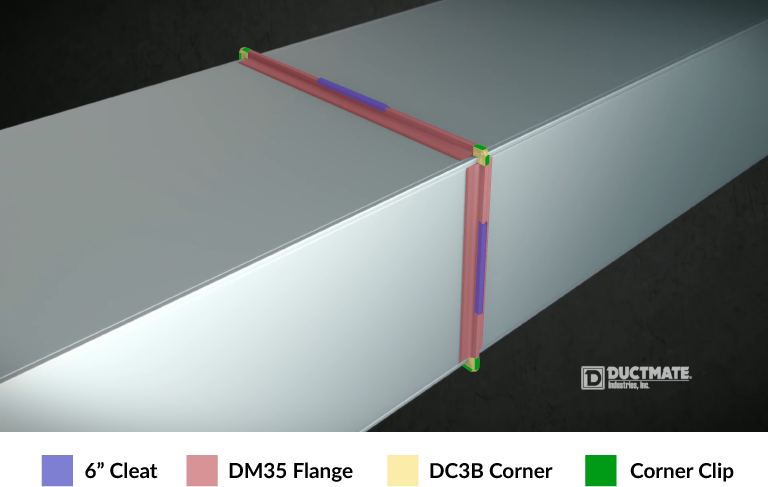
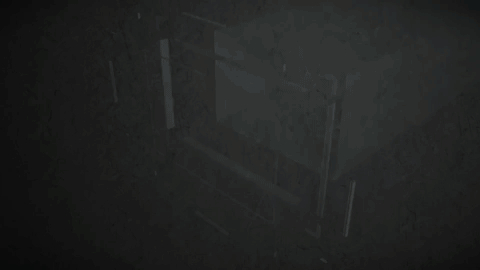
Step 1. Cutting—Flange to required lengths
Components Used in Step 1:
Step 2. Assembling—Corners into Flange to form a Frame
The Frame consists of two main parts: the Ductmate Flange and corner
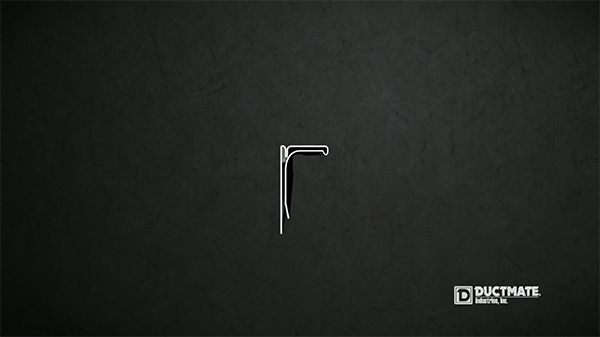
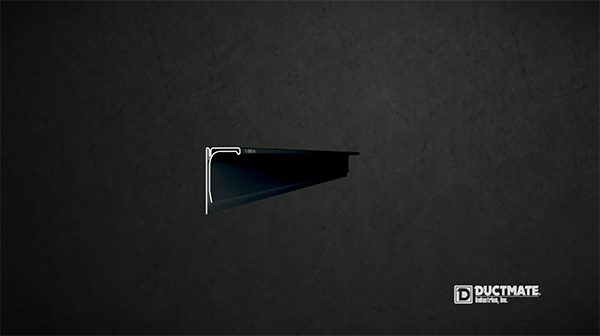
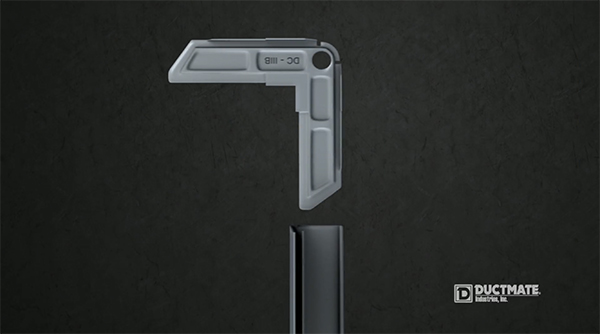
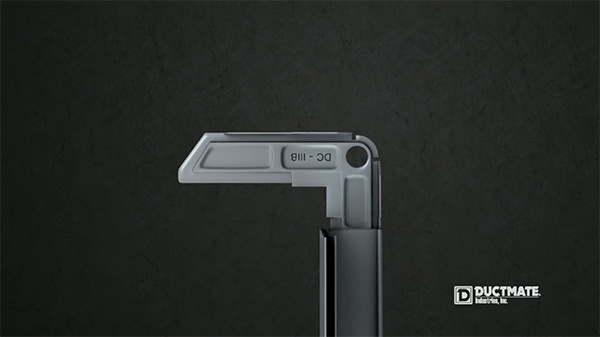
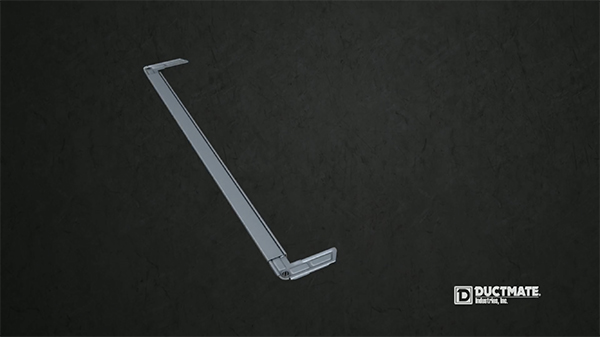
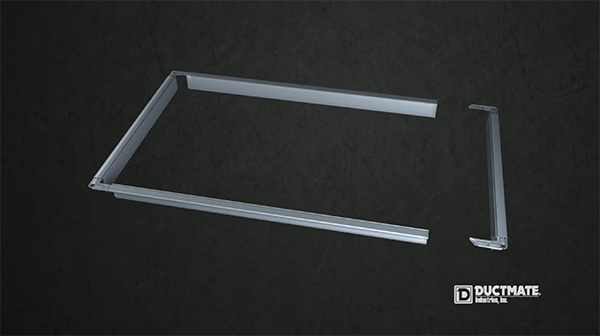
Components Used in Step 2:
Step 4. Fastening (Part 2)—Securing Frame to Duct Wall
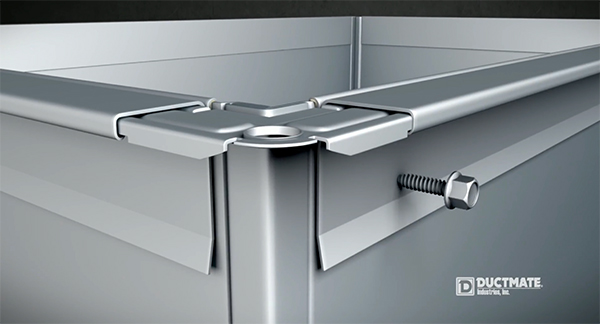
We suggest the #10 x ¾” High Hat simply because it holds better in the Drill Chuck than the short head on a standard #10 x ¾” Drill Screw
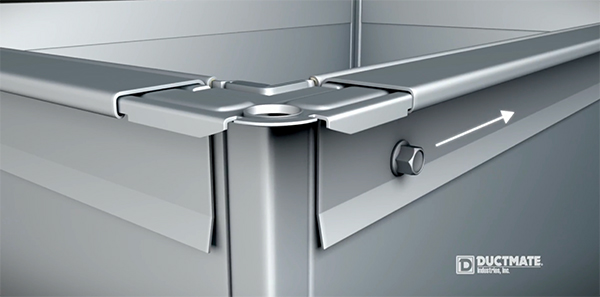
Components Used in Step 4:
There are three options for fastening the flange through the duct wall.
A. Drill Screws
B. Ductmate Repeater Nails
C. Clinching using a Trumpf 350 Power Fastener
Step 5. Gasketing—Two Duct Sections
At this stage, the work moves to the job site 90% of the time
The first step is applying the Butyl Gasketing. Only one of the two mating sections is completely Gasketed around the face of the flange. The second section is Gasketed only at the four corners.
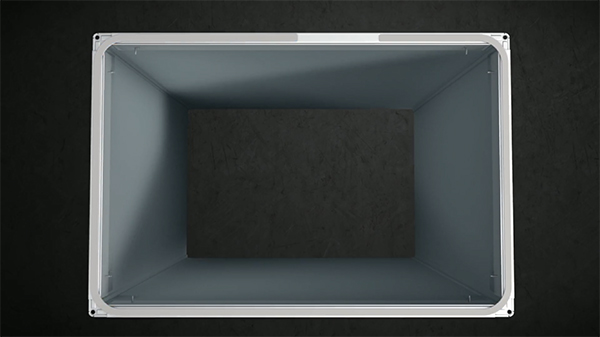
Components Used in Step 5:
Step 6. Connecting
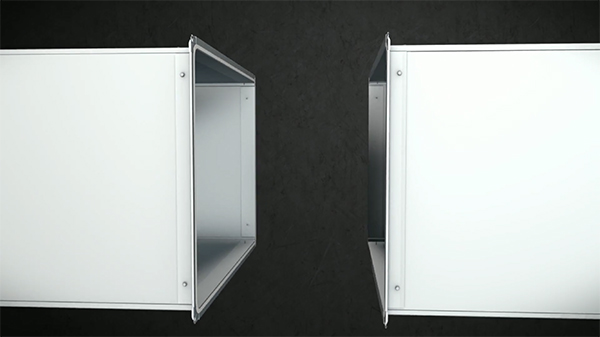
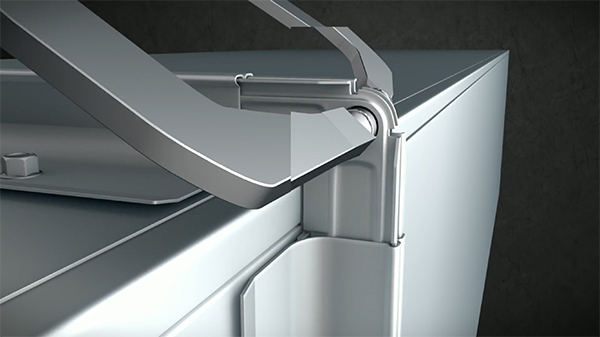
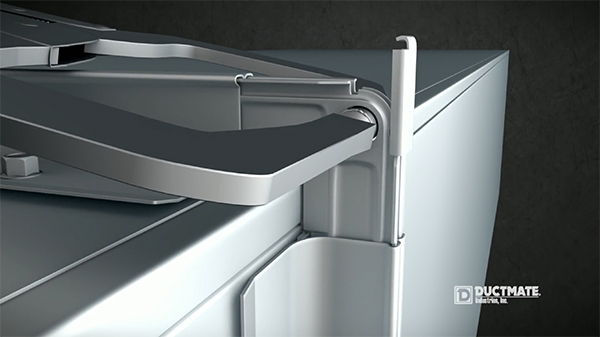

3B corners are often used for Bolt on despite their round hole. The recommended corner for Bolt-on is 3A which has a square hole and a continuous flange around the edge of the corner. The images below show the 3B Corner used as a Bolt On.
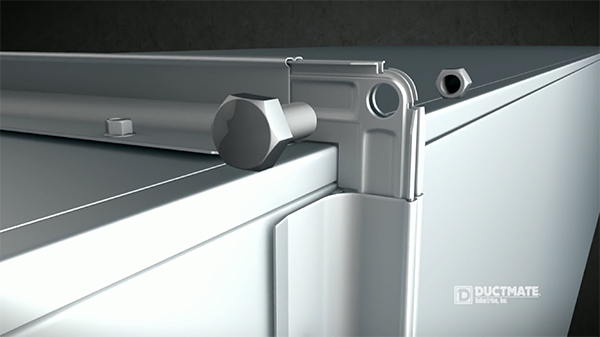
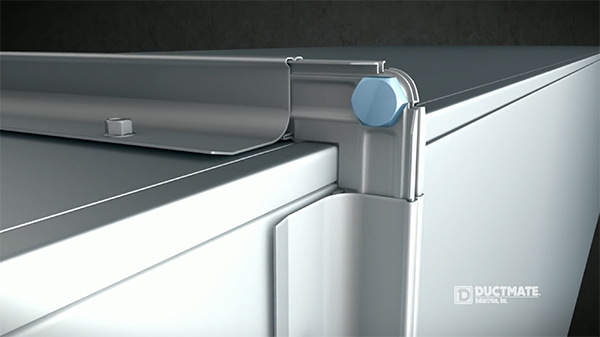
Securing the 4 connections with a 6” Cleat is the final step
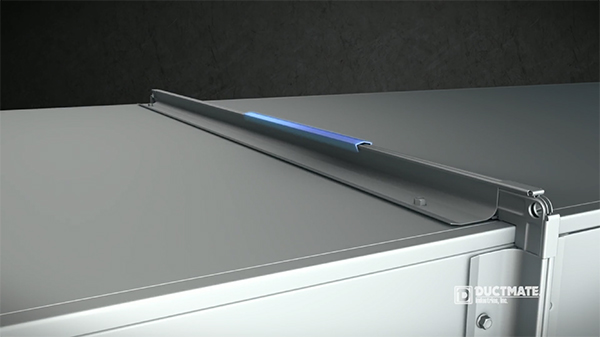
Components Used in Step 6:
Not all jobs are suited for Butyl Gasketing…
Some Rectangular Duct connection applications will call for Neoprene Gasketing instead of Butyl. Neoprene Gasket allows for easier separation and alignment, better for inspection or cleaning. We have a few contractors who use the Neoprene for PreFab work in which they want to do the Test & Balance at shop rather than on job site. (Butyl Gasket is like gum, it would not pull apart without major effort and mess).
When applying Neoprene Gasket, the “prep” is more important. Clean the face of the Flange and then seal /caulk all 8 corner edges.
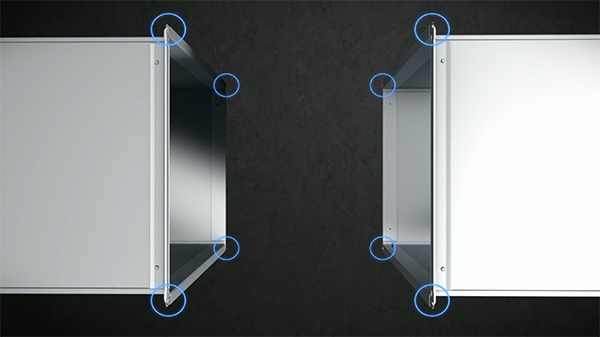
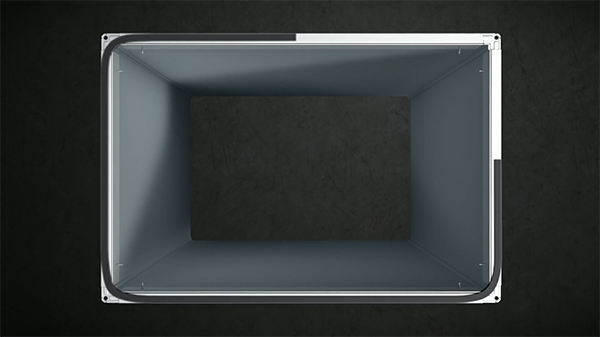
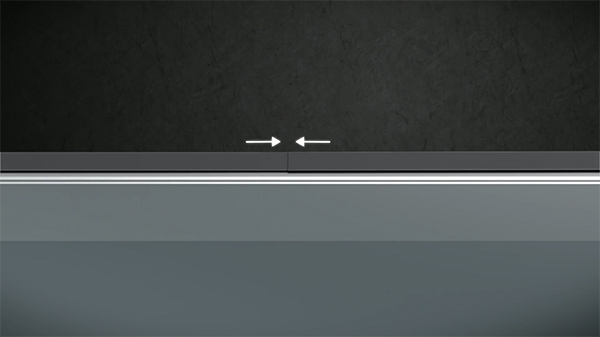
Components Used:

